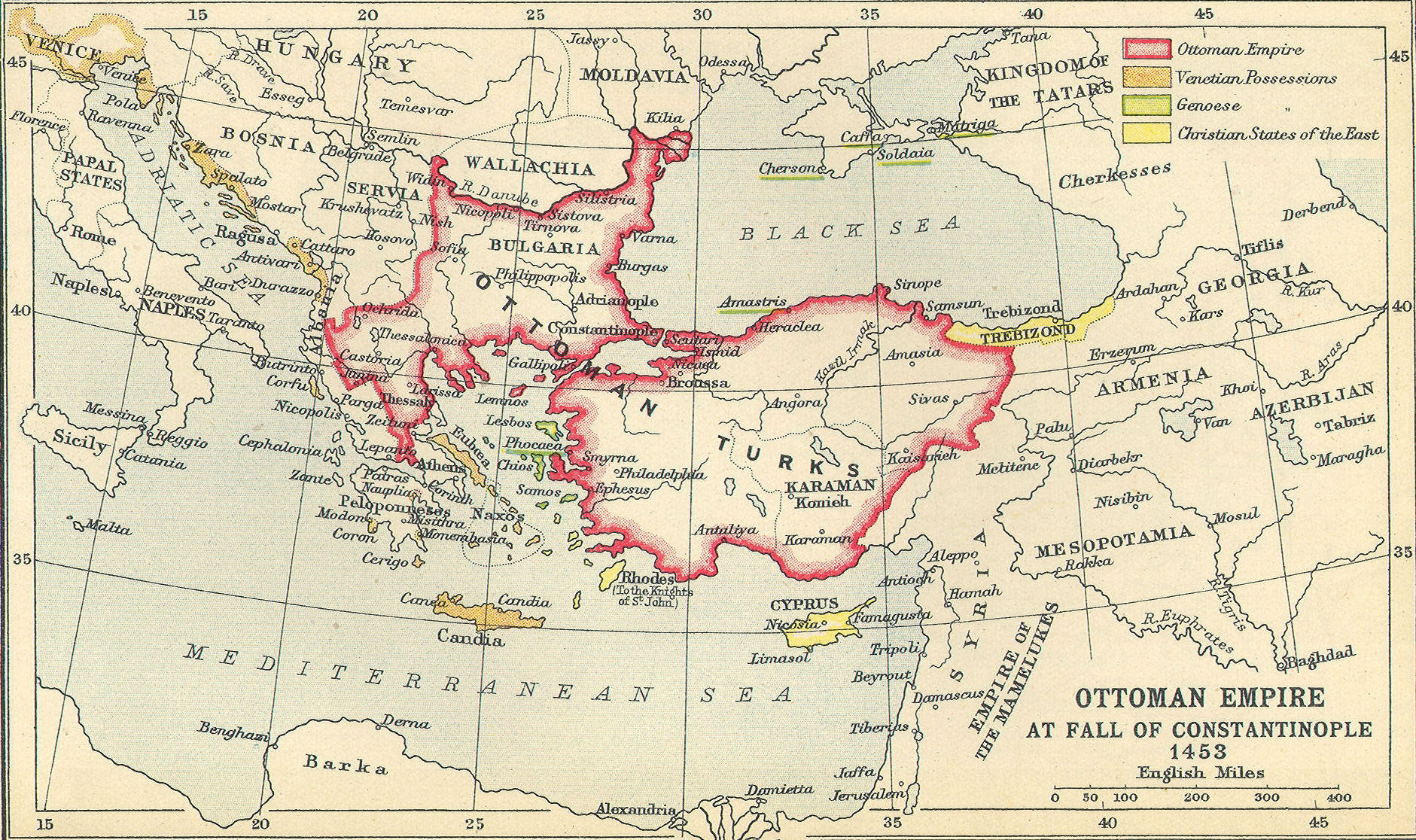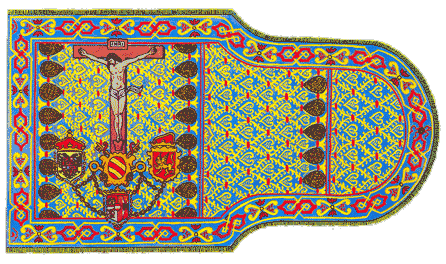This Day in History:
The Battle of Lepanto, October 7, 1571
Today's feast of Our Lady of the Rosary was originally called Our Lady of Victory by Pope Pius V. He instituted the feast to commemorate and express his gratitude for a great victory achieved during his reign on October 7, 1571 - a victory gained through the power of the rosary.
The Battle of Lepanto, October 7, 1571

Since the early 14th century, the Ottoman Turks -- Muslims -- had been pushing to extend their empire into the west from Asia Minor. By the mid-16th century, besides Constantinople, the Turks had conquered Bulgaria and Greece. In 1570 they attacked the island of Cyprus, the last bulwark of Christendom in the Eastern Mediterranean. "The brave defenders capitulated, left with only two days' food. But the Turks broke the conditions of the capitulation and mutilated the prisoners in the most horrible way. Their commander Mustapha, turned the cathedral into a mosque. Sitting on the high altar, he watched the Christian commander Bragadino, being flayed alive, and jeered: "Where is your Christ now? Why doesn't he punish me? Why doesn't he free you?" Bragadino died praying the Miserere, and his body was hanged." (Founded on a Rock by Louis de Wohl) Thousands of Cypriot Christians were killed and many of the women and young men were sold into slavery.
 |
| Don Juan of Austria |
 |
| The Banner of the Holy League |
On October 7, 1571, Don Juan caught the Turkish fleet, commanded by Ali Pasha, on the western coast of Greece and fought a fierce five-hour naval battle in the Gulf of Lepanto. The forces on the Christian side were 225 ships and 80,000 men; those on the Tukish side, 245 ships and 120,000 men.
Far from the battle, Pope Pius V in Rome beheld a vision of the victory; he asked those with him to fall on their knees and give thanks for the triumph. He then set the first Sunday in October as the feast of Our Lady of Victory. A few years later, his successor changed the feast's title to The Feast of the Holy Rosary. Finally, in the twentieth century, the date of the battle, the means of victory and the giver of victory coalesced into The Feast of Our Lady of the Rosary, celebrated October 7th. ...The Turkish ships sailed in a crescent formation in hopes of flanking the Christian fleet. However, the Christian admirals at Lepanto, seeing this maneuver, avoided the trap.Even though the Christian ships were outnumbered by the Turkish fleet, they were much more heavily armed with cannon and musketry. As the Turkish ships approached, they met a hailstorm of cannon fire and musket volleys. On board the Christian ships, priests said Mass and gave general absolution. Don Juan went from ship to ship holding a crucifix and telling the men, “Live or die, we are here to conquer or to die, as heaven chooses.” Then he hung the crucifix on the mast of his flagship, the Ciudad Real.The Turks held hundreds of Christian captives chained to the oars of their galleys in a horrible and terrifying captivity. When a galley went down, the chained slaves went down with it. It appears that at Lepanto, the galley slaves helped prevent their Turkish masters from attaining the speed they needed to ram the Christian ships; the slaves rowed only halfheartedly and fouled the oars as much as they could get away with.These captive Christians could hear the sounds of the chanted rosary coming across the water, for the crews of the Christian ships sang as they fought. It was said that a vision of the Blessed Virgin appeared above the Turkish fleet as the Christians drew close to it. Inspired by this vision, the Christian mariners charged over the rails against the foe.Don Juan’s ship sailed straight toward the Sultana, the flagship of the Muslim commander, Ali Pasha. The Sultana was the first to be boarded after the two ships collided, and a two-hour struggle began. On decks awash with blood, the Spanish sailors and marines pushed the surviving Turks over the ship’s rails and then raised the banner of Christ Crucified on the Sultana’s mast.The Battle of Lepanto ended at 4 p.m. when what remained of the Turkish fleet sailed away toward Istanbul (Constantinople). The Christians, who had lost only 17 ships, captured 177 Turkish ships and destroyed 15 others. Twelve thousand Christian galley slaves were liberated; many more may have been lost to the seas as their ships sank.Don Juan of Austria’s fleet had won a great victory against the Turks and halted their invasion of Europe. The Turkish fleet was not destroyed at Lepanto, but thereafter it was no longer the threat it had been. Europe had once more been saved from Ottoman conquest. (from Light to the Nations I)
Lepanto Trivia: The Spaniard Miguel Cervantes, author of the classic Don Quixote, fought in the Battle of Lepanto. Ill on board the galley Marquesa, he nevertheless begged to be allowed to fight, saying he would rather die for God and his king than remain safely below deck. He was wounded and lost the use of his left arm "on the grandest occasion that past or present has seen, or the future can hope to see." This injury earned him the nickname el manco de Lepanto (the one-handed of Lepanto). In the last stanza of G.K. Chesterton's poem Lepanto, Cervantes sheathes his sword and has a vision of his future literary creation --- "a lean and foolish knight."
Other Resources:
Read aloud G.K. Chesterton's stirring poem, Lepanto.
Coloring page for Our Lady of the Rosary
Coloring page for Mary, Queen of the Rosary
"Spain's Greatest Victory at Sea" from Historical Tales by Charles Morris
"Don John of Austria" from A Child's History of Spain by John Bonner
Coloring page for Mary, Queen of the Rosary
"Spain's Greatest Victory at Sea" from Historical Tales by Charles Morris
"Don John of Austria" from A Child's History of Spain by John Bonner
Lepanto by G.K. Chesterton (Ignatius Press)
Lepanto: The Battle that Saved the West by Christopher Check ( from Catholic Answers Magazine)
The Blood Red Crescent: A Novel of the Battle of Lepanto by Henry Garnett
The Last Crusader: A Novel about Don Juan of Austria by Louis de Wohl (Ignatius Press)

Wonderful post, just shared on Facebook, thanks!
ReplyDelete